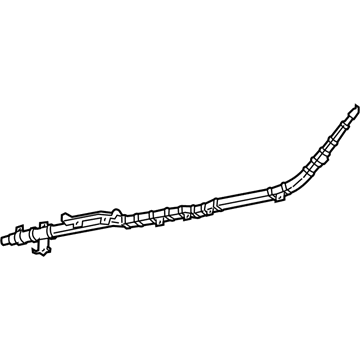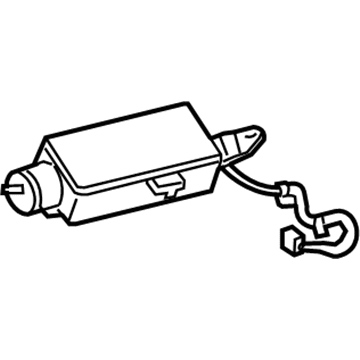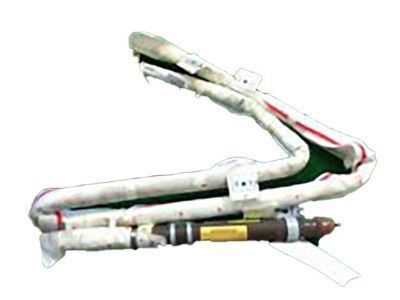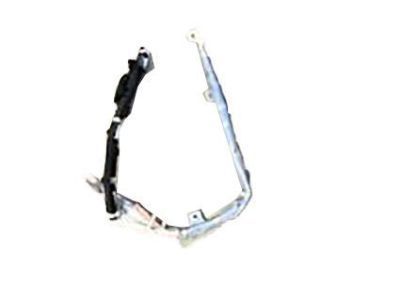×
ToyotaParts- Hello
- Login or Register
- Quick Links
- Live Chat
- Track Order
- Parts Availability
- RMA
- Help Center
- Contact Us
- Shop for
- Toyota Parts
- Scion Parts
My Garage
My Account
Cart
OEM 2004 Toyota 4Runner Air Bag
Air Bag Module- Select Vehicle by Model
- Select Vehicle by VIN
Select Vehicle by Model
orMake
Model
Year
Select Vehicle by VIN
For the most accurate results, select vehicle by your VIN (Vehicle Identification Number).
3 Air Bags found

2004 Toyota 4Runner Inflator Curtain, Passenger Side
Part Number: 62170-35020$1325.56 MSRP: $1942.62You Save: $617.06 (32%)Ships in 1-3 Business DaysProduct Specifications- Other Name: Air Bag Assembly, Curtain Shield; Curtain Air Bag, Right; Head Air Bag; Air Bag Assembly, Curtain Shield, Passenger Side
- Position: Passenger Side
- Part Name Code: 62170A
- Item Weight: 12.20 Pounds
- Item Dimensions: 47.4 x 18.7 x 9.2 inches
- Condition: New
- Fitment Type: Direct Replacement
- SKU: 62170-35020
- Warranty: This genuine part is guaranteed by Toyota's factory warranty.
2004 Toyota 4Runner Passenger Air Bag
Part Number: 73960-35050$685.68 MSRP: $1004.86You Save: $319.18 (32%)Ships in 1-3 Business DaysProduct Specifications- Other Name: Air Bag Assembly, Instrument Panel; Instrument Panel Air Bag, Upper; Passenger Inflator Module; Air Bag Assembly, Instrument Panel Passenger W/O Door
- Part Name Code: 73960A
- Item Weight: 8.20 Pounds
- Item Dimensions: 14.9 x 11.7 x 7.8 inches
- Condition: New
- Fitment Type: Direct Replacement
- SKU: 73960-35050
- Warranty: This genuine part is guaranteed by Toyota's factory warranty.
 Product Specifications
Product Specifications- Other Name: Air Bag Assembly, Curtain Shield; Curtain Air Bag, Left; Head Air Bag; Air Bag Assembly, Curtain Shield, Driver Side
- Position: Driver Side
- Part Name Code: 62180A
- Item Weight: 12.30 Pounds
- Item Dimensions: 47.4 x 18.7 x 9.5 inches
- Condition: New
- Fitment Type: Direct Replacement
- SKU: 62180-35020
- Warranty: This genuine part is guaranteed by Toyota's factory warranty.
2004 Toyota 4Runner Air Bag
Looking for affordable OEM 2004 Toyota 4Runner Air Bag? Explore our comprehensive catalogue of genuine 2004 Toyota 4Runner Air Bag. All our parts are covered by the manufacturer's warranty. Plus, our straightforward return policy and speedy delivery service ensure an unparalleled shopping experience. We look forward to your visit!
2004 Toyota 4Runner Air Bag Parts Q&A
- Q: How to inspect and repair Air Bag systems after a collision on 2004 Toyota 4Runner?A: A person needs to perform air bag system repairs together with inspections right after an auto incident. Cars which have not been in a crash need a diagnostic system check alongside visual inspection for cuts and minute cracks and marked discolorations near the front pillar garnish and roof headlining of the curtain shield air bag assembly. Similar inspection procedures should be executed on assemblies which did not initiate an air bag deployment after collisions. These inspections must examine the assembly for similar damage and clean up any wire harness damage and connector chipping. The diagnostic procedure for the front passenger air bag assembly matches vehicles not involved in collisions by examining the instrument panel area for any signs of damage. The inspection process requires examination of the assembly in collision-involved vehicles which did not deploy air bags alongside checking the instrument panel and reinforcement for damage-related deformation or cracks. Replace all damaged components. The inspection of front seat air bag assembly requires visual and diagnostic examinations for damage in all inspections both with and without collision involvement alongside wire harness and connector assessment. Vehicle owners need to check the horn button assembly under both collision and non-collision situations although damage assessment of the steering wheel and horn button contact plate requires replacement of deformed components. A diagnostic examination of the air bag sensor assembly is required for unbeaten vehicles yet vehicles involved in a collision need new sensor installation after air bag deployment. The diagnostic procedures of the side air bag sensor assembly match those of preceding elements and operators must replace this unit after deployment. Check the air bag front sensor through diagnostics and visually inspect for damage in cars after collisions before replacing it if the air bag deployed. Testing should be performed on the air bag sensor rear similarly to other sensors and replacement must happen when it has been deployed. To check the seat position air bag sensor you should inspect vehicles that have experienced accidents and perform diagnostic tests as well as visible damage assessments.

















